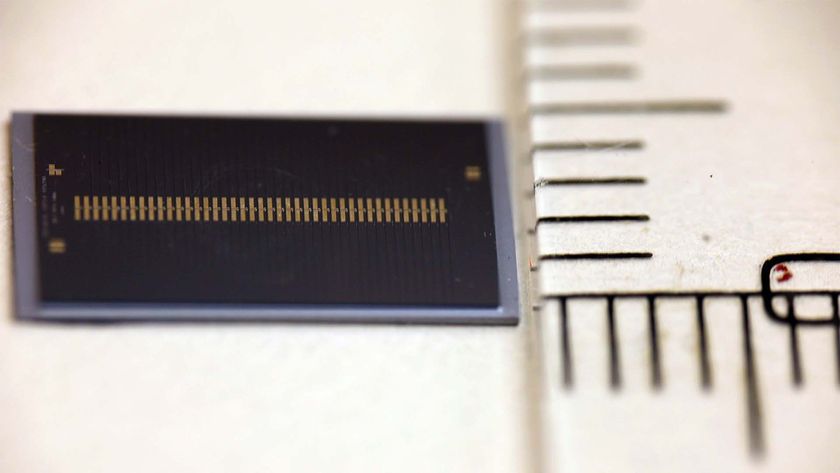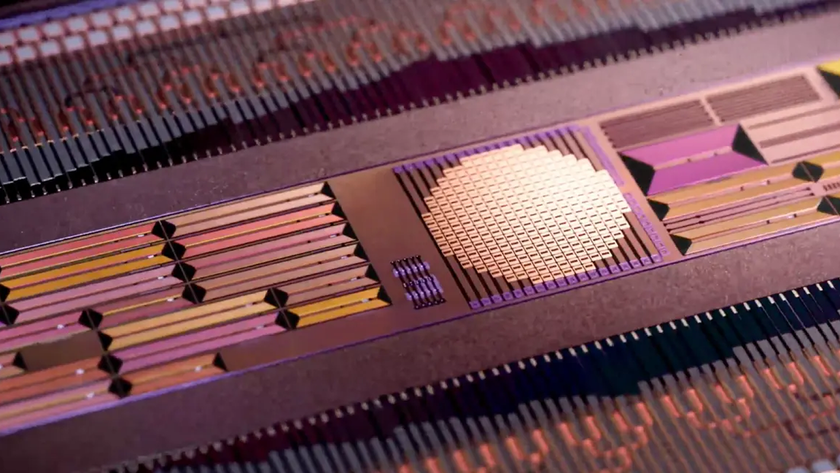Low-Radiation Cell Phones: All the Rage?
Ever progressive, San Francisco voted today to become the first city in the nation where retailers must display the radiation levels emitted by cell phones. This value, which will be posted alongside each cell phone model's features and prices, represents a potential new front in the extremely competitive and booming cell phone marketplace.
Backers of the ordinance, such as the Environmental Working Group (EWG), a Washington, D.C.-based advocacy organization, and San Francisco mayor Gavin Newsome, have essentially framed the right-to-know law as a "better safe than sorry" approach to cell phone safety.
"We are not suggesting people abandon cell phones — we certainly wouldn’t — but we suggest that people use cell phones differently by using headsets and that they buy low-radiation cell phones," said Olga Naidenko, a senior scientist at EWG.
Unclear and present danger
Threats to health from cell phone radiation have been a persistent, though scientifically dubious, concern for years now. The anxiety has only grown as the usage of mobile devices has exploded, especially amongst children.
The most comprehensive assessment to date, the 10-year Interphone study published last month under the auspices of the World Health Organization, found contradictory results that even the study authors admitted were puzzling.
The multi-country study found that while the longest-term cell phone users had slightly elevated risks of brain cancers, lower-use people actually had fewer cancers, as though cell phones had inexplicably protected them from harm. New long-term studies are getting underway in Europe in an attempt to provide better, clearer answers.
Sign up for the Live Science daily newsletter now
Get the world’s most fascinating discoveries delivered straight to your inbox.
"The science is not really settled," said Naidenko. "What we are talking about is precautionary action at this moment."
Safety in numbers
To this end, the EWG put together a "Get a Safer Phone" chart last year. It compiled all the Specific Absorption Rates (SARs) – the amount of radiation absorbed by human tissue – on file with the Federal Communications Commission (FCC), and listed phones by their level, from lowest to highest.
Cell phone makers must submit SAR levels for their products sold in the United States to the FCC, which regulates emissions of electronic devices. Phones cannot emit radiation in excess of 1.6 watts per kilogram averaged over a volume of one gram of tissue. This FCC threshold, adopted in 1996, is based on animal studies and human occupational exposure data, Naidenko said.
Not surprisingly, manufacturers tend not to include SARs on printed material that comes with phones, nor are SARs openly advertised. However, consumers can look up SAR levels on the FCC's Web site.
But to do so, consumers need the phone's FCC identification number. Because this number appears on a phone's case often under a battery pack, it is not something that non-owners tend to have access to, Naidenko said.
By bringing such public, but buried information to light in one place on the EWG chart, Naidenko said that now "people don’t have to wonder about the radiation level of a phone before they buy it."
Industry response
The FCC's 1.6 watt per kilogram level for damage to tissue is set up as a threshold, meaning that any levels below it, whether 0.1 or 1.5, are supposed to be equivalently safe.
Accordingly, groups that represent cell phone makers say that pitting one phone against another safety-wise based on SAR is a false choice.
"Rather than inform, the ordinance will potentially mislead consumers with point of sale requirements suggesting that some phones are 'safer' than others based on radiofrequency emissions," said John Walls, vice president of public affairs for the Cellular Telecommunications and Internet Association, in a statement.
Generally, no manufacturer or particular kind of cell phone tends to produce more radiation than competitors or other devices, Naidenko said.
In other words, an advanced, features-laden smartphone such as the Apple iPhone can (and does) emit fewer radio waves than a basic budget cell phone, like a Nokia Surge. (The SAR level of the iPhone 3GS is 0.24 to 1.03 watts per kilogram and the Surge's is 1.31 watts per kilogram. The iPhone 4 SAR is not yet publicly available.)
Perception matters
Despite the science still being inconclusive, making phone SAR data easily accessible might behoove phone manufacturers to aim for lower figures.
"Even if it's just a small set of the population that pays attention to these SAR values, and I think there will be a segment of population that does, it will provide the economic motivation for industry to make cell phones with lower SARs," said David Carpenter, director of the Institute for Health and the Environment at the University of Albany.
The radiation in question is emitted by a phone's antenna as it links up to a base tower, said EWG's Naidenko. She suggested that many phone manufacturers could lower SARs by engineering their devices with so-called directional antennas, rather than antennas that also emit radiation equally in all directions, including at a user's head.
On the consumer side, EWG has encouraged cell phone users to text rather than talk, and to use Bluetooth or speakers to limit their radiation exposure.
Despite its success in San Francisco, the EWG does not have immediate plans to lobby for similar legislation in other cities or states. A statewide initiative similar to that in San Fran recently failed to pass the California state legislature, and other efforts to include warning labels on cell phones have thus far ailed elsewhere in states such as Maine.
It seems that there is no end in sight for the cell-phones-causing-cancer debate — or legislative action associated with it — so consumers can expect to hear a lot more about cell phone SARs.
"We believe this is information that consumers are entitled to know," Naidenko said. "If in ten years the [scientific] answers come in and show a big increased health risk from cell phones, we will ask why didn't we take precautionary steps?"
• Best Bets for Getting an iPhone 4 on Launch Day • Wicked Lasers 'Lightsaber' Can Burn Eyes and Skin • 10 Profound Innovations Ahead












